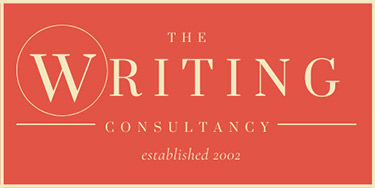What is Narrative Tension?
Creating tension is something writers strive for and is the difference between a pedestrian story and one that lifts off the page and into the pit of the reader’s stomach.
When was the last time you read a book that had you on the edge of your seat or sitting up rigid in bed? If it wasn’t seat-edge tension, when was the last time you had to stay up into the small hours turning the pages to find out what happens next despite the ridiculously early start in the morning? This is usually the kind of feeling that a reader gets from a novel that has successfully nailed escalating tension and high stakes.
Tension doesn’t just have to be high octane action – it can simply be a need to know what happens next driven by several contributing factors which make it important enough for the reader to keep turning pages. There are several key attributes that help to create this kind of tension within your writing.
Investment
One of the most significant factors that must be present is investment. Tension generally comes from caring or having strong feelings about something – whether it is caring about the person, what happens next, the outcome or, ideally, all of the above.
Investment in the characters:
In order to care about a character we must empathise with them. By giving the character a desire with which the reader can identify or internal struggles to which the reader can relate, we encourage empathy. When we start to empathise and care about the character then their internal struggles or the attempts to reach their goals matter to us and the tension heightens. By creating proactive rather than passive characters, who actively go after what they want or who are facing up to their struggles, in our minds, we start to root for them – their struggles become our struggles and we unavoidably start to feel the tension mounting.
Investment in the journey and the high stakes:
Whilst it is difficult to separate out the character and their journey, it is important for the reader to be able to identify with the journey the character is on. The journey could be physical, emotional or spiritual but it needs to be a journey that the reader can understand and will therefore care about the outcome. The goals need to be real and aligned with the type of character you have on this journey and the stakes need to be high with convincing dangers or obstacles to keep us invested enough to care about the impact of the potential outcome.
Variation in Pace
Tension is not permanent. Similar to our own lives, tension peaks and dips, otherwise we would find ourselves in a permanent state of exhaustion and feeling very frazzled indeed – as will a reader embroiled in a permanently tense plot. Tension must eventually reach a climax and must build along the way. There can be smaller moments of tension along the way with smaller moments of release creating the opportunity for it to build again. Tension starts to build during the quiet moments of your novel through implication and foreshadowing and those little things that are said but not said as the reader starts to pick up on hints and read between the lines. Tension is the seed you sow in the quiet moments.

Pace through writing style:
Keep sentences short as you build in tension, avoid flowery language and long descriptions and don’t at this point start to introduce backstory. Make sure everything has been set up before you get to the point where you want the tension to escalate. Be really careful to avoid the need to include narrative that will slow the tempo and stall the tension.
Anticipation and Uncertainty
Tension is about making promises of things to come – it doesn’t have to be promises of big events, it can be as quiet as character changes or as significant as catastrophic dangers. The important thing is it needs to matter enough to the reader. When you promise the reader outcomes on a journey or revelations on the next page it is the anticipation of the promise and the uncertainty of the outcome that will keep the reader hooked. The reader needs to believe in the many different possibilities and be captivated by the uncertainty as to which event will eventually befall the protagonist.
Overall, fulfil your promises – if you promise big, deliver big and make your promises believable. When a reader has a strong belief in your writing, believes that you will deliver and that they will be fulfilled by the outcome, then you are well on your way to keeping your readers up at night and reading on into the early hours.






